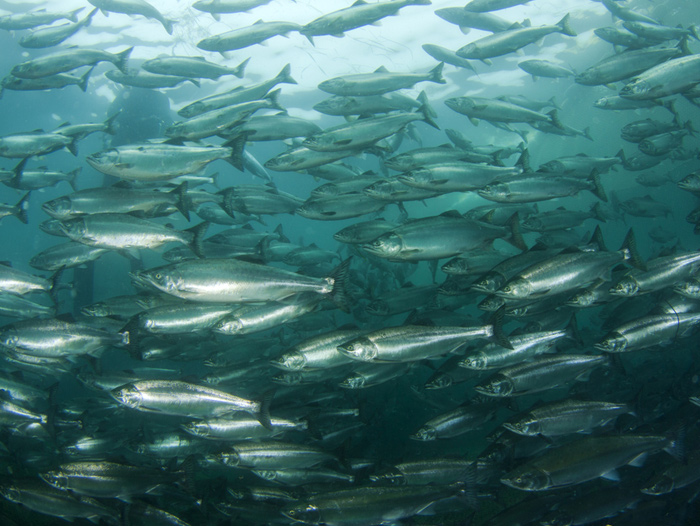How Aquaculture Innovation Can Save Seafood
January 15, 2020 | 2 min to read

Oceans once teeming with life are being whittled away. Larger, predatory fish – salmon and tuna included – are now estimated to be at less than 10% of their pre-industrial levels. Historical data from coastal ecosystems has indicated that the loss of these large, predatory fish — called “fishing down the food web” by an article in Scientific American — can have severe consequences on the structure of these ecosystems. Aquatic predators high on the food chain keep prey populations in check. When they collapse, species lower on the food chain proliferate. Kelp forests, for example, are being threatened by a rise in herbivorous sea urchins. Kelp death en masse came after natural sea urchin predators, including sea otters, decreased in population.
This disintegration of the ocean’s wildlife also corresponds with market demands for seafood, which have risen at an exponential rate since the early 1980s. When these larger, predatory fish are raised in aquaculture (fish farms) they are often fed “forage fish”, including sardines and anchovies. These forage fish are harvested from the oceans (to the tune of millions of tons per year), ground up, and used as feed for aquaculture, poultry, and other farm-raised animals. They provide an ideal source of nutrition and contain oils like EPA, DHA Omega-3, and ARA (arachidonic acid), an essential Omega-6.
To read the rest of the story, please go to: Synbiobeta
